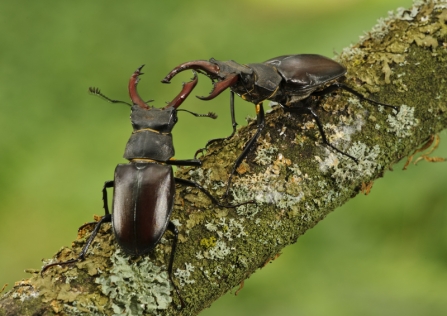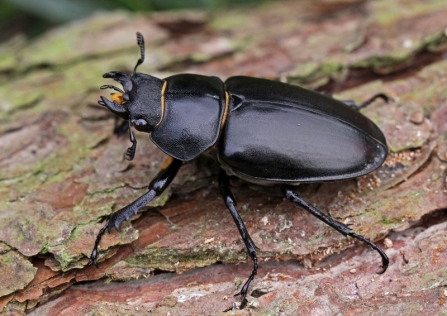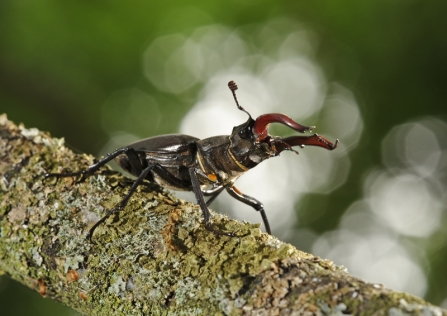Their distinctive over-sized, antler-like mandibles may look unnerving, but they are not used for eating, instead they are only used for impressing females and duelling with other males, like deer.
Species in the spotlight - The Stag beetle
Terry Whittaker/2020VISION

Photo: Terry Whittaker/2020VISION
Female Stag beetles are quite often mistaken for the Lesser Stag beetle, as they lack the characteristic jaws, however, female Stag beetles are reddish-brown in colour and have larger bodies.

Photo: Margaret Holland
Stag beetles actually spend most of their lives underground as grubs, living in and feeding on old trees and rotting wood. In fact, they can remain as larvae for a whopping 6 years! Once they pupate and turn into adults their lifespan is somewhat shorter, emerging around May with just enough time to find a mate and the female to lay her eggs before dying off in August.
Once synonymous with late summer evenings, flying around clumsily in search for mates, their numbers are now in severe decline due to habitat loss, increased predation and development. Stag beetles are now a protected species and classified as nationally scarce. Although their numbers have declined in Essex, keep your eyes peeled for them in woodlands, parks and gardens.

Photo: Terry Whittaker/2020VISION
How you can help Stag beetles:
- Look out for adults underfoot. Stag beetles like to sun themselves on warm surfaces like pavements and roads, so if you spot one, try to move it out of harm’s way.
- Resist the urge to tidy up all areas of your garden. Don’t remove dead or decaying wood as this is the food source for the larvae and it is this type of habitat that is in decline.
- If you have no dead or decaying wood lying around, why not build your own log pile. This will benefit all kinds of minibeasts.
#BugBonanaza

